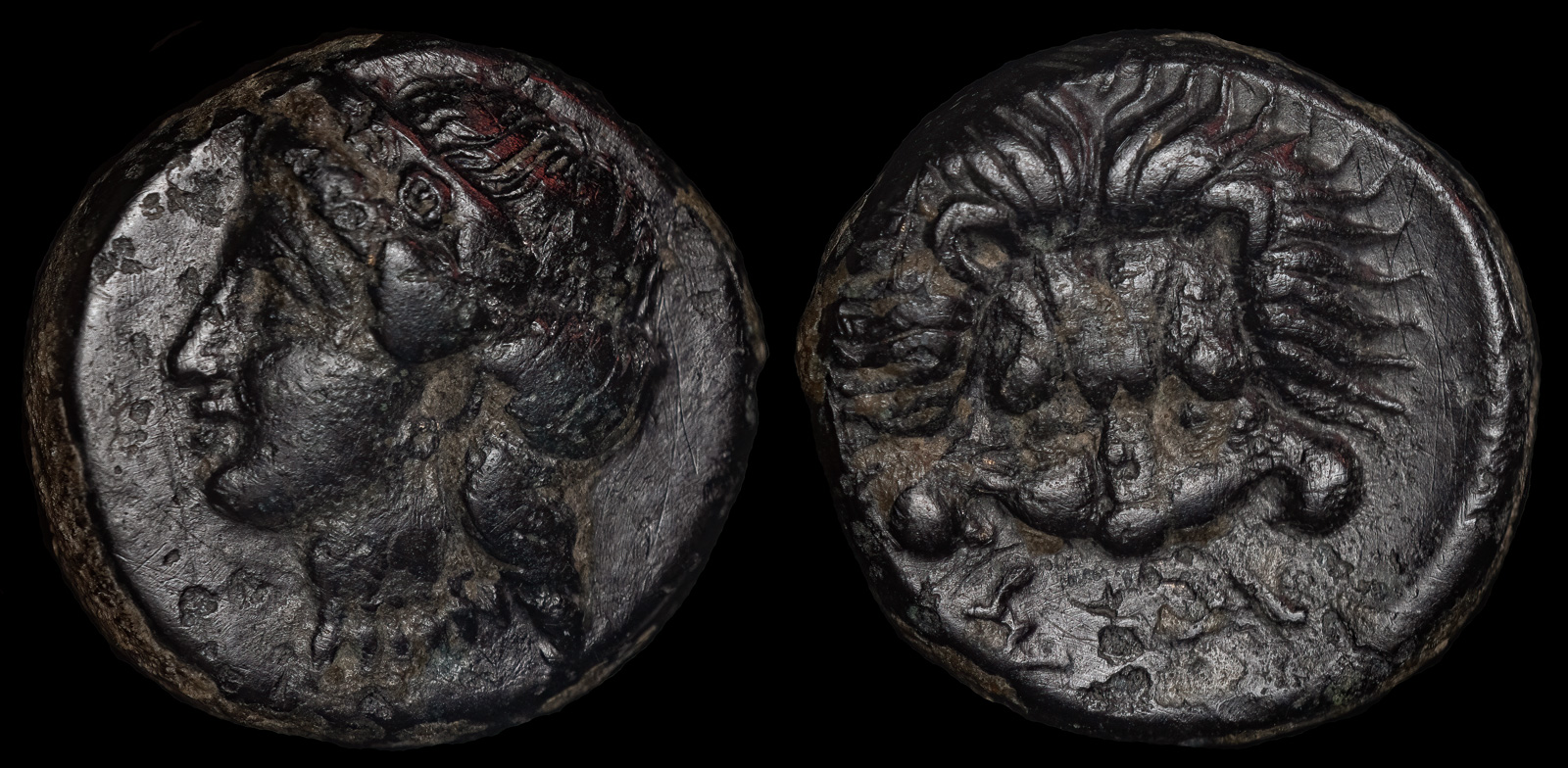
circa 408-380 BCE
Æ 12 mm, 1,73 g
Head of Hera left, wearing stephane, necklace, and earring
Facing lion’s head; Σ-Α below.
very fine
BMC Ionia pg. 364, 147; SNG von Aulock 2296.
Samos is the home of the Tunnel of Eupalinos, which is over one kilometer long and which served as an aqueduct. It was a marvel of engineering for the time because it was excavated from both sides using geometry to calculate the digging. So amazing was the tunnel at the time that Herodotus covered it in length.
We don’t know exactly when the tunnel was constructed, but it may have been in the 6th century BCE. It served its purpose for 1100 years before silting up, and is today a tourist attraction.
The island contained multiple cities. There was the ancient town of Samos itself and Pythagoreion, where the tunnel leads. The island also had one of the most famous temples to Hera in antiquity, the Heraion. Ruins of the temple may still be seen. Herodotus during his time stated it was the largest temple he knew of. It is believed to have honored Hera’s birth.
Samos was a very powerful island in antiquity and founded numerous colonies, including Bisanthe, Perinthos, Samothrace, Kydonia, Nagidos, and Kelenderis. Their principal rival in the region was Miletos, with whom they eventually fought a war.
Numerous famous people from antiquity were from Samos, but perhaps the two most known to us are the mathematician Pythagoras and Aesop, of fable fame.
During the diadochi period, Samos for some time was the main naval base of the Ptolemies.

Circa 310 BCE
Dichalkon Bronze, 16 mm, 4.14 g, 1 h
struck under the magistrate Ariston
Diademed head of Hera to right
Rev. ΑΡΙΣΤΩN Facing lion scalp
HGC 6, 1247. SNG Copenhagen 1703